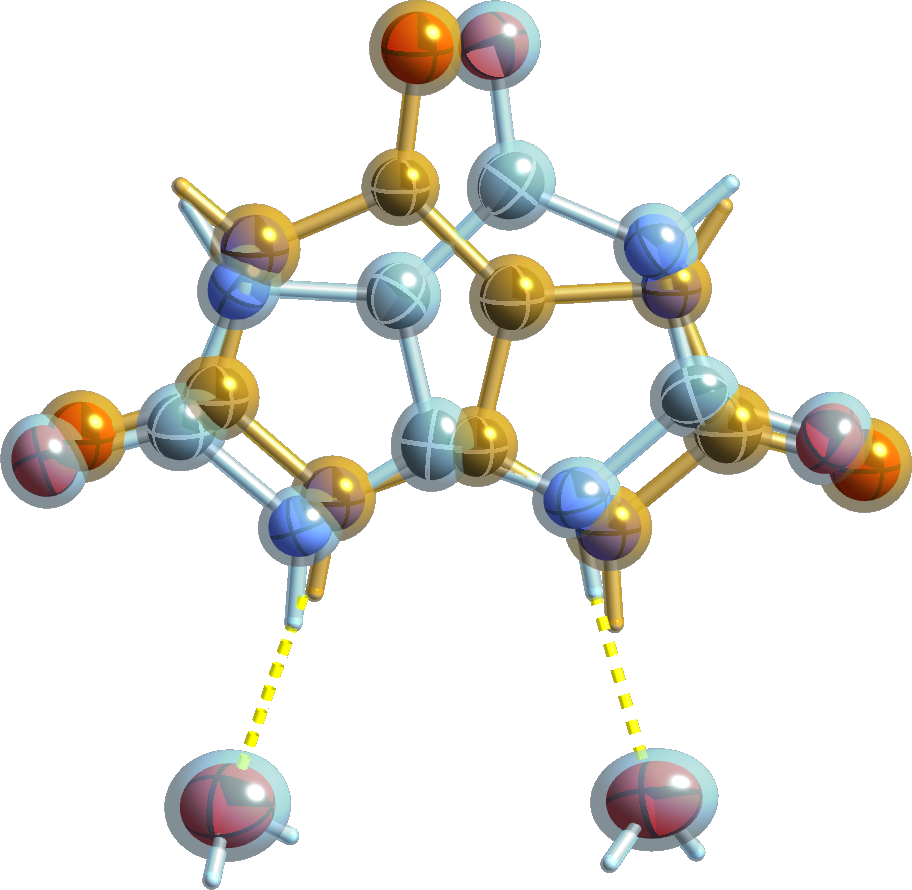
Unlike the whole-molecule
disorder and twinning
by pseudo-merohedry tutorials, we will start with structure solution, simply
to prove that no magic is involved. The first step is to get an initial model
for the structure. For uric acid dihydrate, the minor component fractions of
both twinning and disorder can vary from crystal to crystal, which seems to be
related to how the crystals are grown. In the structure presented here, the minor
component fractions are fairly small compared to the major components. In such
cases, minor components rarely prevent solving the structure. Here we'll use
SHELXT for
structure solution and ShelXle
for model building.
1) Solve structure using SHELXT and ShelXle.
2) Include twinning using TWIN and BASF in SHELXL.
3) Add disorder using FRAG...FEND in SHELXL.
4) Add restraints/constraints to enable stable refinement.
... More advanced stuff (only possible because β is very close to 90°)...
5) Tie the major/minor disorder components using FVARs.
2) Include twinning using TWIN and BASF in SHELXL.
3) Add disorder using FRAG...FEND in SHELXL.
4) Add restraints/constraints to enable stable refinement.
... More advanced stuff (only possible because β is very close to 90°)...
5) Tie the major/minor disorder components using FVARs.